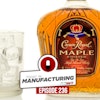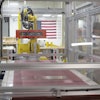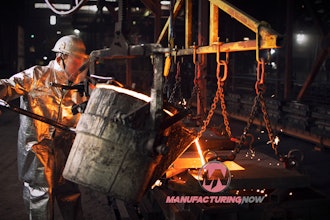Veolia Environmental Services’ investments in safety have taken them down a path of heightened employee participation and greater customer appreciation.
Veolia Environmental Services is the waste services division of Veolia Environmental, a multi-national provider of waste disposal and recycling. Bartholomew heads the Flanders, NJ Technical Solutions facility, one of 12 such locations in the nation. It services New Jersey, eastern Pennsylvania and eastern New York in collecting, transferring, storing and disposing of industrial waste that consists of either packaged lab chemicals or containerized material held in 55-gallon drums. In both the collection of these materials, and then their on-site storage at the Flanders location, where they’re held until being shipped off for recycle or disposal, safety is paramount.
Untapped Potential
One of the most significant advantages of being in a large company is the ability to tap macro resources for micro situations. So when another Veolia subsidiary was awarded the Occupational Safety & Health Administration’s Voluntary Protection Program Star award, it triggered a push to get more facilities within the company onboard with stronger safety programs. After nearly a year of preparation and employee training, the Flanders location also received this prestigious award late last year.| Veolia not only stores and transports materials in the proper waste management containers (below), but also supplies them for customer use (above). |
Part of that sense of ownership and involvement comes from empowering employees to make decisions, and garnering their input before others are made. The facility’s Safety Committee, for example, is comprised of employees from all areas of operations. This committee addresses potential safety issues and then works together in finding a solution.
The key here is identifying a hazard while it still has the potential to be a problem, instead of reacting to a situation after someone has gotten hurt, or unsafe practices have been used. John Schantz, who serves as the Branch Environmental & Safety Manager, cites that employees have even begun performing impromptu inspections in looking to identify potential safety hazards.
A greater attention to safety has also produced some impressive statistics for Veolia’s Flanders location. To even be considered for the VPP Star Award, the three-year average for recorded incidents must be at 8.3 or lower. This group led by Bartholomew and Schantz is at 2.38. Similarly, this location posted a 1.7 mark as their three-year average for lost time incidents, versus an acceptable figure of 5.7.
Standing Out
Although Bartholomew describes business as consistent and improving, he does admit that Veolia works in a tough marketplace. This stems from an overcapacity of providers that drive prices up and down according to their place in the market and zeal for trying to acquire new business. Additionally, the combination of manufacturers getting smarter about eliminating waste, and the presence of companies like Veolia that work as consultants to that end, means that fewer or smaller service opportunities now exist.“Despite these challenges,” states Bartholomew, “companies are more focused on safety now than ever before, and since 9/11, secure disposal of these volatile chemicals is key.” The company’s clientele runs the gamut, from the growth areas of biotech and pharmaceutical processing plants to industrial facilities and refineries to government agencies to schools and hospitals. He also estimates that the company performs as many as 130 emergency responses annually in addressing hazardous material spills and the clean-up of other industrial or chemical waste situations. These types of actions bring us to the heart of Veolia’s business, and need for added safety practices. At their location, the company houses 22 bays for unloading and loading the chemicals recovered by field crews on semi trucks that will take specific waste to a specific location for incineration or recycling. These field crews, usually 2 or 3 people, will spend an average of one day a month at one customer’s facility collecting these waste materials. Specific information is obtained and a Waste Information Profile (WIP) is completed for identifying and documenting the hazards specific to that site. This information is evaluated to determine the most appropriate treatment method, and then entered into a laptop computer that generates the required paperwork. In some instances, Veolia employees are kept in-house to constantly manage material removal. The company also distributes and sells the appropriate containers, labels or pumps necessary to perform the service.
| (above) Veolia’s extensive on-site storage of volatile chemicals and industrial waste makes security an important part of their operation. (below) The company has a 40+ vehicle fleet that stands at the ready to dispose of waste once the trailer dedicated for a specific disposal site is full. |
“Most of our customers have been with us since day 1,” explains Bartholomew, “but taking the necessary steps towards receiving this Star award helped make those relationships even stronger. Many of them have gone through this process before, so they knew the type of commitment we were making towards not only protecting our employees, but in making sure that no unsafe operations were being performed on their grounds. Seeing us put forth this kind of effort goes a long way towards retaining customers in a marketplace with multiple waste management options.” Bartholomew states that he knows of only one competitive location in the country that has earned the VPP Star award.
An Inside Job
“We were fortunate in some regards,” recalls Schantz, “because we had a number of safety-focused concepts that were in development, and there was a branch safety plan from corporate that we were in the midst of incorporating. The challenge was taking all of that information and making it fit.|
Situational training is provided at the Flanders location to ensure safe practices are used in the field. |
So their road to continued operational safety continues. It’s a path paved with improved employee performance and greater operation efficiency due to a lower number of employee injuries that can sap company resources and drag on profit margins. And most importantly, everybody goes “home the same way they showed up for work in the morning.”


















